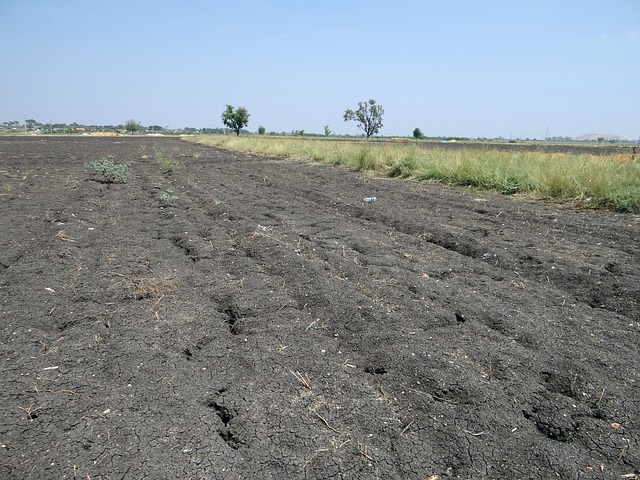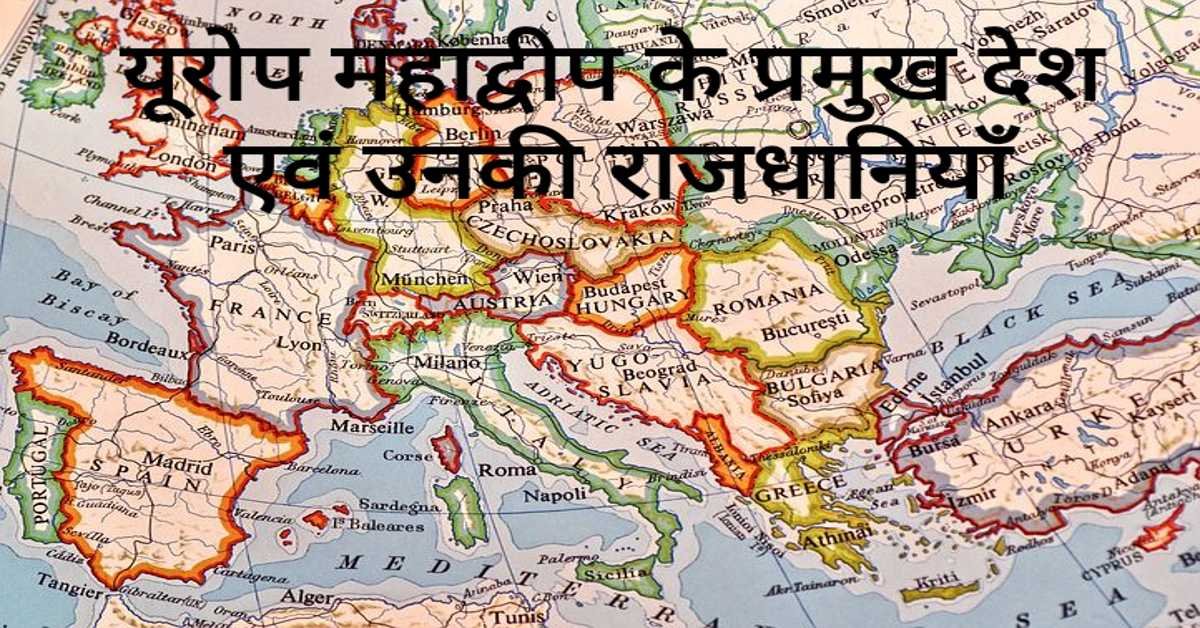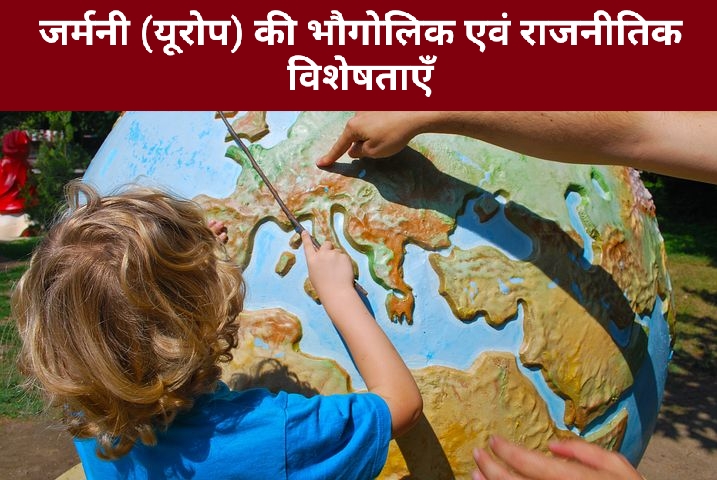
भारत का भूगोल : मृदा– सामान्य परिचय
(Geography of India : Soil– General Introduction)
Soil refers to the upper layer of the earth, which in common language is called 'soil' . Soil is very important for us. It provides water, mineral salts and other nutrients to the plants as a natural source for plant growth. Soil is the upper layer of the Earth, which is a mixture of mineral particles and fossils. It has been produced in millions of years. There are normally many layers of soil.
मिट्टी की सबसे ऊपरी परत फसलों की पैदावार हेतु बहुत उपयोगी होती है। यह परत छोटे मिट्टी के कण, सड़े - गले पेड़ पौधे तथा जीवों के अवशेष होते हैं। मृदा भूपर्पटी की सतह पर निर्मित होती है। यह शैलों के अपक्षयण व विघटन से उत्पन्न भू पदार्थों, मलवा तथा विविध जैव सामग्रियों का मिश्रण है।
The topmost layer of soil is very useful for crop production. This layer is the remnants of small soil particles, rotten tree plants and organisms. Soil is formed on the surface of the earth's crust. It is a mixture of soil, debris and various bio-materials produced by weathering and dissolution of rocks.
मृदा की दूसरी परत महीन कणों की होती है। इन महीन कणों के अंतर्गत चिकनी मिट्टी इत्यादि आते हैं। मृदा की इस दूसरी परत के नीचे विखंडित चट्टाने तथा मिट्टी का मिश्रण होता है और इसके नीचे अविखंडित सख्त चट्टाने पाई जाती हैं। ये कुछ सेंटीमीटर से लेकर कई मीटर तक भी हो सकती हैं।
The second layer of soil consists of fine particles. Under these fine particles come clay etc. Under this second layer of soil there is a mixture of disintegrated rock and soil and beneath it there are undivided hard rocks. They can range from a few centimeters to several meters.
अधिक क्षारीय या अम्लीय मृदा पौधों के लिए हानिकारक होती है। पौधों की वृद्धि हेतु सामान्य रूप से 6.0 से 7.0 pH मान वाली मृदा आवश्यक होती है। मृदा के इस pH मान के बीज पौधे अपनी सारी क्रियाएँ करते हैं। मृदा के मुख्य घटक जलवायु, खनिज तत्व एवं ह्यूमस होते हैं। इन घटकों का अनुपात (संयोजन) मृदा के प्रकार को निर्धारित करता है।
More alkaline or acidic soil is harmful to plants. Soil with pH values of 6.0 to 7.0 is normally required for plant growth. Seed plants of this pH value of soil perform all their activities. The main components of soil are climate, mineral elements and humus . The ratio (combination) of these components determines the type of soil.
मृदा के संगठन में सम्मिलित पदार्थ निम्नलिखित हैं (Following are the substances involved in the organization of soil) :
1. खनिज पदार्थ : लगभग 40 से 45%
2. मृदा जल : लगभग 25%
3. मृदा वायु : लगभग 25%
4. ह्यूमस या कार्बनिक पदार्थ : लगभग 5 से 10%
5. मृदा जीव व मृदा अभिक्रिया।
1. Mineral matter: About 40 to 45%
2. Soil Water: About 25%
3. Soil air: around 25%
4. Humus or organic matter: about 5 to 10%
5. Soil Fauna and Soil Reaction.
मृदा परिच्छेदिका :– मृदा परिच्छेदिका को 'मृदा पार्श्विका' भी कहा जाता है। यह मृदा की विभिन्न परतों के उर्ध्वाधर स्तरों (काट) का सामूहिक विन्यास है। मृदा परिच्छेदिका अनेक मृदा संस्तरों से मिलकर बनी होती है तथा प्रत्येक संस्तर अपने भौतिक तथा रासायनिक संगठन, मृदा संरचना और जैविक पदार्थों में एक दूसरे से भिन्न होते हैं।
Soil Profile: - Soil lamina is also known as 'soil parietal' . It is a collective configuration of vertical layers (cuts) of different layers of soil. The Soil Trap is made up of several soil beds and each stratum is different from each other in its physical and chemical organization, soil structure and organic matter.
स्तर 1 : प्रथम स्तर में जमीनी स्तर पर जैविक सामग्री और ह्यूमस की प्रचुरता होती है।
Level 1: The first level has an abundance of organic material and humus at the ground level.
स्तर 2 : यह ऊपरी मृदा कहलाता है। आमतौर पर यह स्तर काले रंग की तथा कार्बनिक पदार्थों में समृद्ध होता है। इस स्तर को निक्षालन का क्षेत्र भी कहते हैं। इसमें जैविक पदार्थ एवं खनिज पदार्थ साथ - साथ मिलकर बनते हैं। फसलों एवं पेड़ - पौधों की अधिकांश जड़े इसी स्तर में होती हैं।
Level 2: This is called the upper soil. Usually this level is black and rich in organic matter. This level is also known as leaching area . In this, organic matter and mineral matter are made together. Most roots of crops and trees are in this stage.
स्तर 3 : यह स्तर भूमि के नीचे की मृदा गाद एवं चिकनी मृदा है। इस स्तर को जल संचयन का क्षेत्र भी कहा जाता है। यह स्तर अपने से ऊपरी स्तर के सभी निक्षालित खनिज संग्रहित कर लेता है। इस स्तर में घुलनशील खनिजों, जैसे कैल्सीलाइट से बना होता है। इस स्तर में लोहा, एल्युमिनियम व अन्य जैविक मिश्रण संग्रहित होते हैं।
Level 3: This level is soil and silt soil below ground. This level is also called the area of water harvesting. This level collects all the deposited minerals from the upper level. This level consists of soluble minerals, such as calcilite . In this layer iron, aluminum and other organic mixtures are stored.
स्तर 4 : यह स्तर ऋतुक्षरित खराब चट्टानों से बना होता है। यह चट्टान मृदा परिच्छेदिका के नीचे स्थित होते हैं।
Level 4: This level is composed of weatherproofed eroded rocks. These rocks are located below the Soil Trap .
RF competition
INFOSRF.COM
संबंधित जानकारी नीचे देखें।
(Watch related information below) 👇🏻

आशा है, उपरोक्त जानकारी उपयोगी एवं महत्वपूर्ण होगी।
(I hope the above information will be useful and important. )
Thank you.
लेखक
(Writer)
infosrf.com



.jpg)




